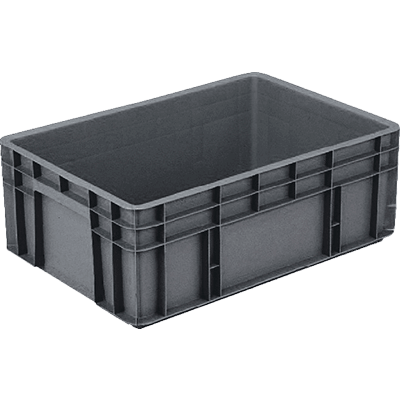What Is a Conductive Container?

Normal containers are prone to becoming electrically charged. In contrast, a conductive container is crafted with a conductive material blended into it. Ordinary containers, typically made of non-conductive materials like plastic, such as polypropylene, are susceptible to electrical charging, making them unsuitable for certain applications. Charged containers generate static electricity, posing a risk for electronic and semiconductor components, which are sensitive to static discharges.
Conductive containers, on the other hand, prevent static charge and dust accumulation. Due to their grounding, conductive containers do not accumulate static electricity and, consequently, do not attract airborne dust particles.
Uses of Conductive Containers
Conductive containers are primarily employed for electronic and semiconductor components. As previously mentioned, these containers are indispensable for protecting electronic and semiconductor components from the detrimental effects of static electricity. They come in various sizes, ranging from less than 1 liter to approximately 80 liters, suitable for storing semiconductor chips and other electronic parts. Larger containers serve as storage solutions for electrical and electronic components and are used as returnable containers within manufacturing facilities.
Conductive containers are also utilized for products that demand a contamination-free environment. The absence of static electricity prevents dust and foreign particles from adhering to the containers, making them ideal for industries requiring pristine conditions. Additionally, conductive containers are employed for the safe transportation of electronic circuit boards.
Characteristics of Conductive Containers
Conductive containers are typically crafted from plastic materials infused with conductive substances. Common plastics used for these containers include polypropylene and polycarbonate. These materials are chosen for their strength and lightweight properties. However, being non-conductive by nature, they can accumulate electrical charge through friction. To address this, conductive containers are manufactured by incorporating conductive materials like carbon into these plastics, preventing charge buildup. This dispersion of conductive material throughout the container enables static dissipation through grounding.
It is essential to note that conductive containers may lose their effectiveness if placed on highly insulating materials. While the conductive material is mixed into the container, it retains its conductive properties even when the surface is wiped or rubbed. Nevertheless, like ordinary containers, conductive containers may experience gradual deterioration from factors like ultraviolet radiation, particularly if exposed to direct sunlight. To maintain their performance, it is advisable to store these containers away from direct sunlight when used over extended periods. Additionally, placing a conductive container on a rubber sheet or highly insulating material hinders the dissipation of electricity and may not effectively eliminate static even when using conductive containers.